The Ultimate Guide to Cycling in Spain
Your all-in-one guide for an unforgettable cycling holiday in Spain: top cycling routes, seasons, must-see places, and essential travel tips.
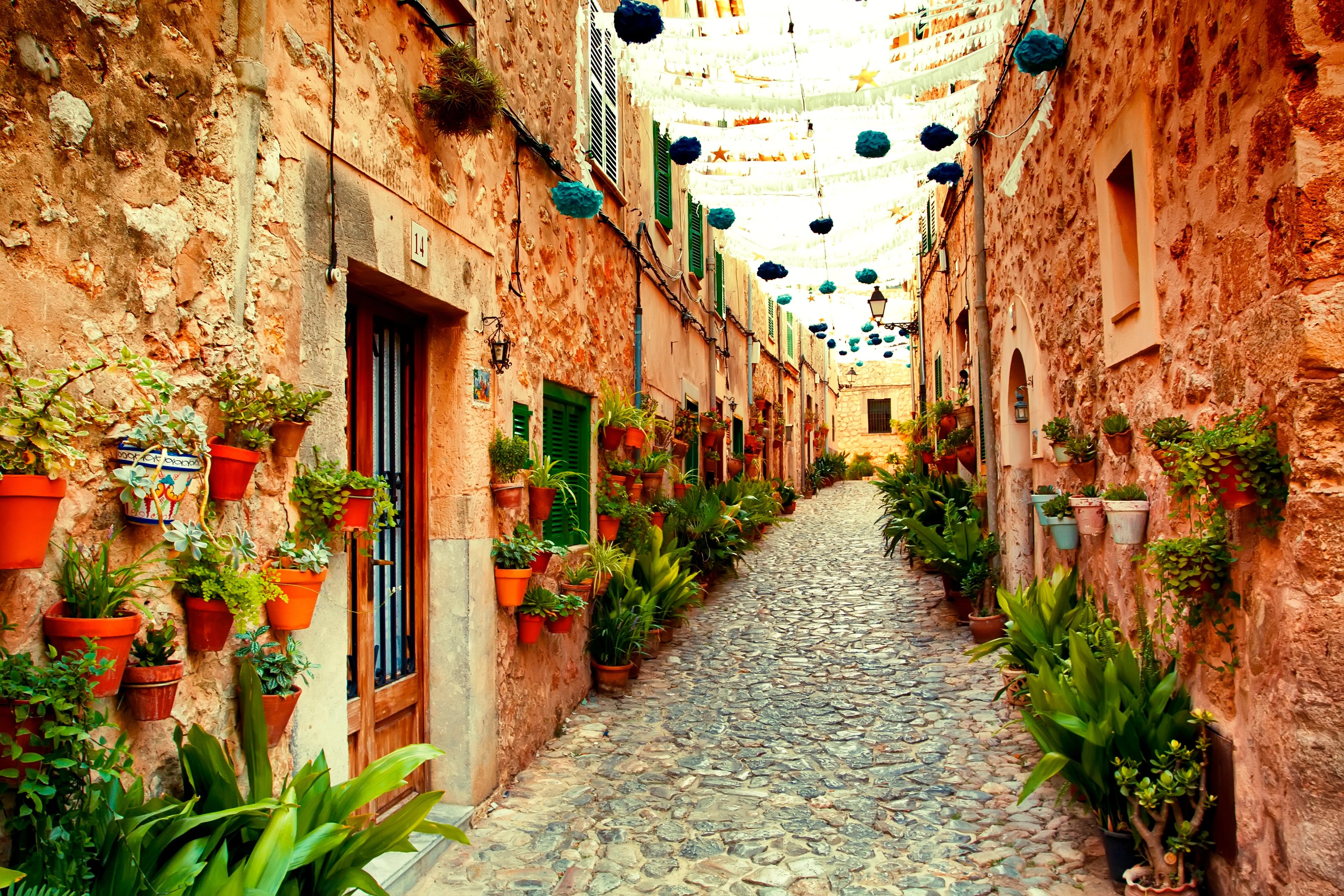
Quick Links
Did you know Spain boasts over 300 days of sunshine in many regions, a road network of over 160,000 km, and everything from Mediterranean coastlines to volcanic islands?
This guide is your all-in-one starting point for a Spanish cycling holiday, whether you’re planning a self-guided adventure, joining an organized tour, or crafting your own DIY route.
Inside you’ll find:
- Best times to ride
- Top cycling regions and iconic climbs
- Must-see places
- Daily life on a cycling tour
- Road rules & etiquette
- Travel logistics, packing tips, and local culture
- And much, much more!
¡Vamos a rodar!—let’s ride.
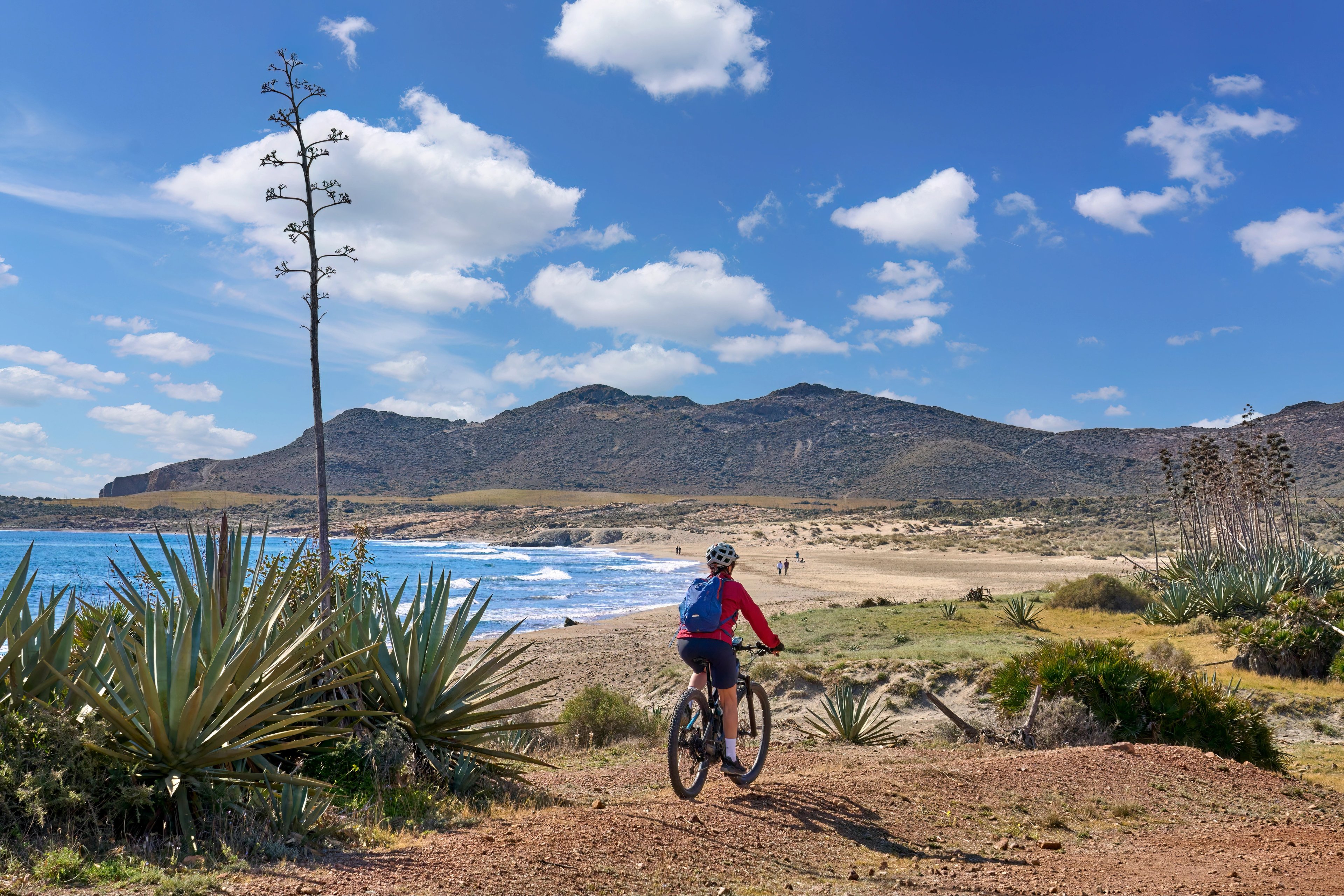
Why Cycle Spain?
Cycling Spain offers a rare mix of sunshine, scenery, and cycling culture.
From the snow-capped Pyrenees to the volcanic moonscapes of Tenerife, riders can chase climbs, coastlines, and café stops in every season.
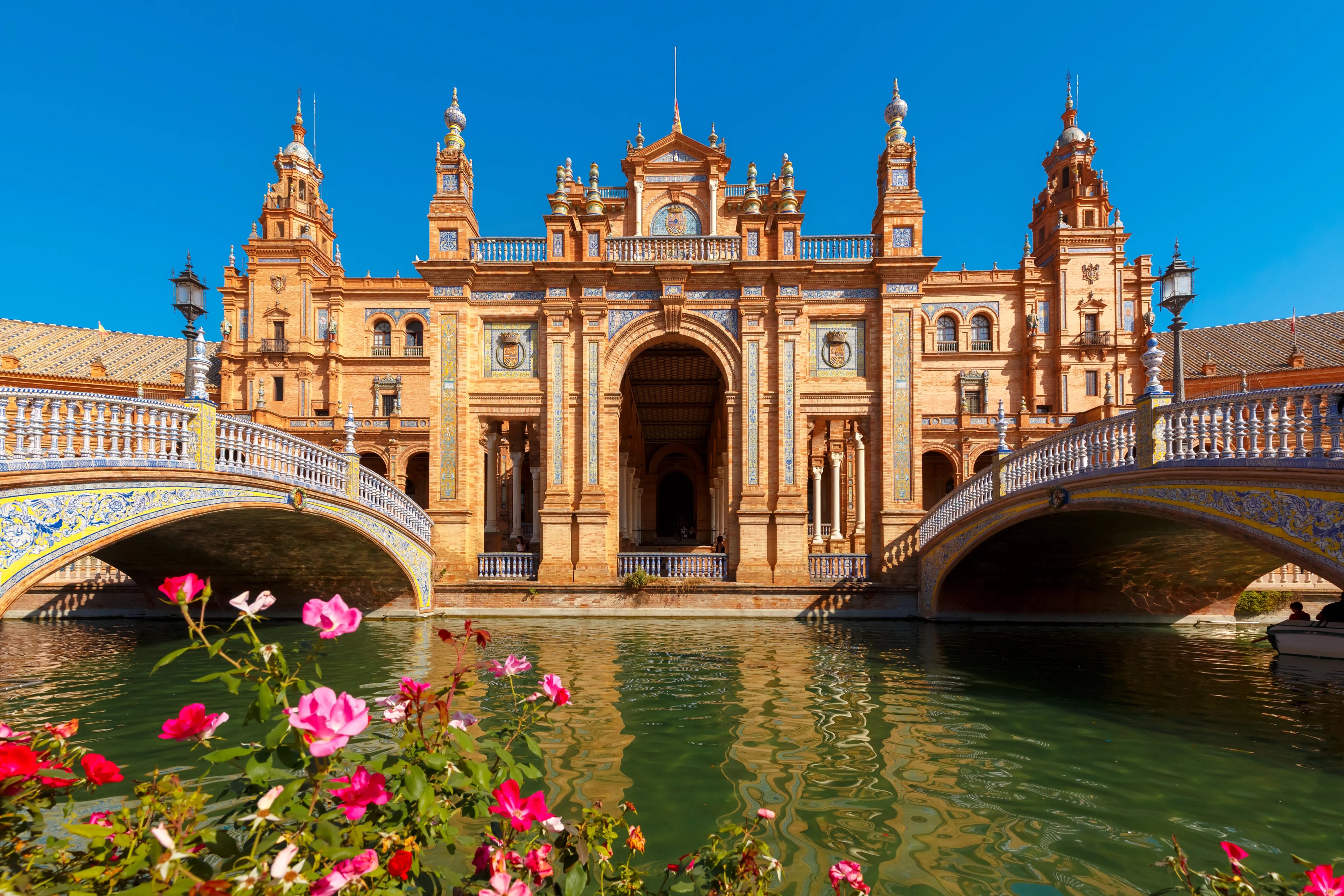
Here’s what makes Spain stand out for riders everywhere:
- Endless variety of landscapes – towering mountains, glittering coasts, volcanic islands, and rolling wine country.
- Year-round cycling – mild winters in the south and Canaries, cool mountain air in summer.
- Iconic climbs & pro-level routes – think Angliru, Sa Calobra, Mount Teide, and countless quiet backroads.
- Excellent cycling infrastructure – Vías Verdes rail-trail greenways, well-signed rural roads, and bike-friendly cities.
- A vibrant Spanish spirit – flamenco rhythms, lively plazas, and fiestas that spill into the streets.
- Rich culture & history – Roman aqueducts, Moorish palaces, Gothic cathedrals, and more than 50 UNESCO sites.
- Legendary food and wine – tapas, pintxos, Rioja, and the freshest Mediterranean seafood.
- Great value for money – welcoming locals, cyclist-friendly lodging, and excellent prices.
- Safe and secure riding environment – well-maintained roads and a culture that respects cyclists.
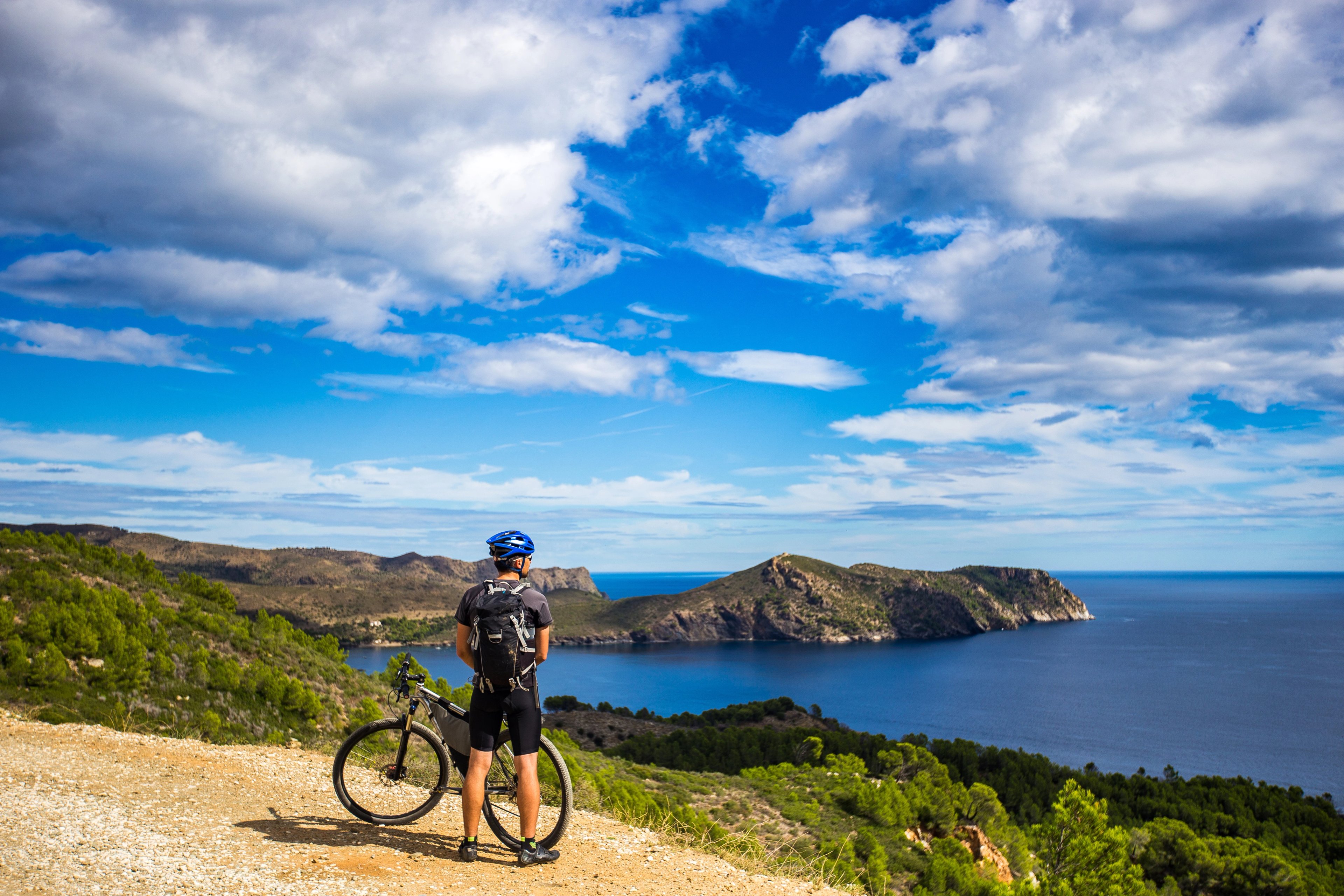
If you want the full story—from epic climbs and hidden rail-trails to Spain’s unforgettable food culture and the warm welcome that greets every rider: See the full list of reasons you'll love cycling Spain.
When to Go
Spain is a true year-round cycling destination, but each season brings its own character.
- Spring (Mar–May): Prime time almost everywhere. Coastal areas warm up, inland stays comfortable, and wildflowers light up the countryside.
- Summer (Jun–Aug): Perfect for the north and the mountains—the Pyrenees, Picos de Europa, and Green Spain stay cool—while lowland interiors can be scorching.
- Autumn (Sep–Nov): A favorite for many riders. Moderate temperatures, quiet roads, and golden vineyards make for unforgettable tours.
- Winter (Dec–Feb): Mild and sunny in Andalucía and the Canary Islands—ideal for escaping northern winters—while northern interiors can be cold or wet.
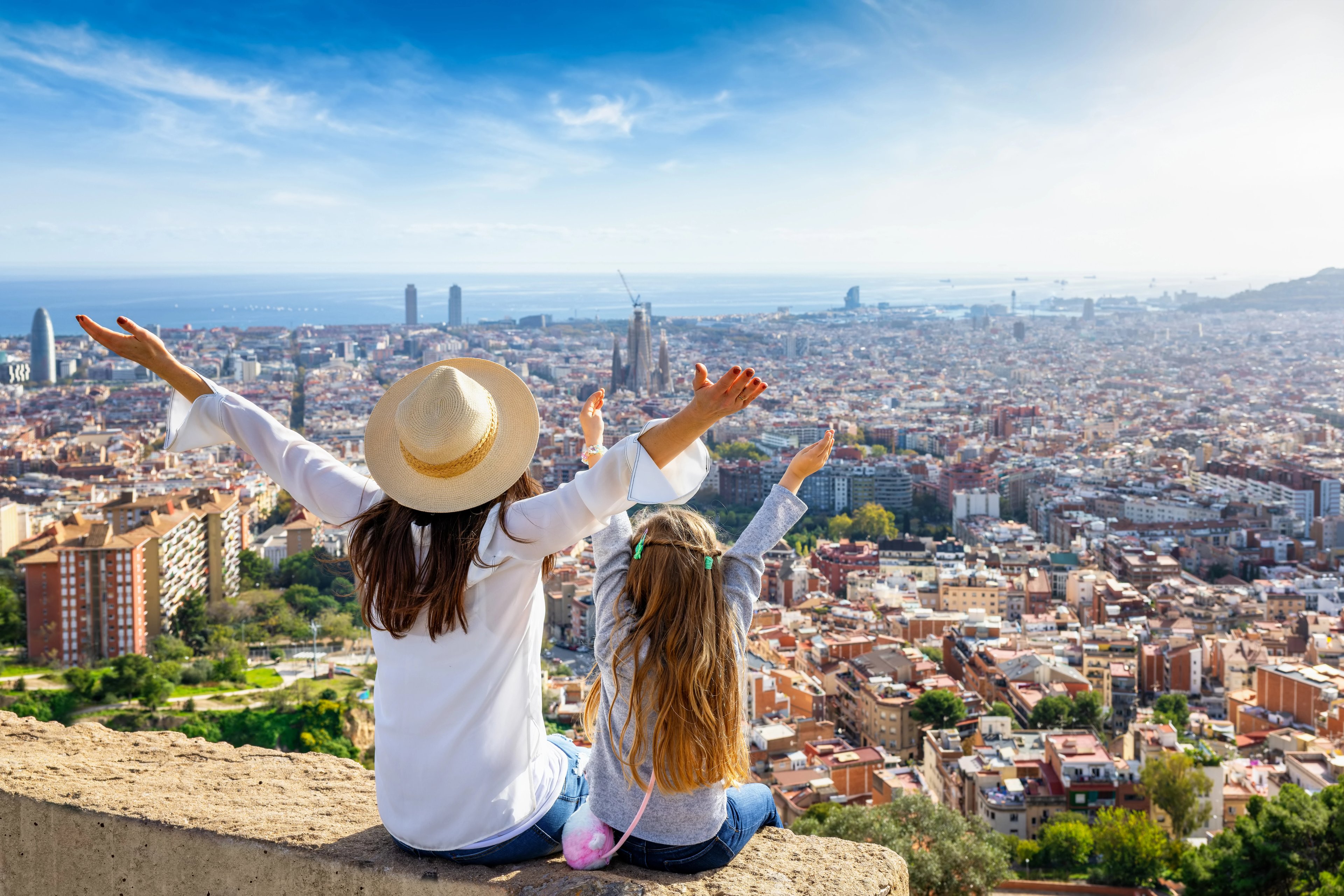
Because Spain’s climates range from Atlantic to Mediterranean to alpine in the Pyrenees, you can always find a region ready for riding, whether you’re chasing warm coastal breezes or crisp mountain air.
Want month-by-month weather tips, regional breakdowns, and insider advice to match your ride to the perfect season?
See our detailed month-to-month weather guide.
Top Cycling Routes
With over 160,000 km of paved roads, thousands of kilometers of Vías Verdes rail-trail paths, and some of Europe’s most celebrated climbs, Spain is a country built for every type of rider.

From the snow-capped Pyrenees to the subtropical Canary Islands, you can chase sunshine in winter, climb alpine passes in summer, and always find quiet, well-maintained tarmac in between.
Here are the must-ride regions at a glance:
- Andalucía – Sun-drenched climbs and Moorish villages
- Girona & Catalunya – Pro training roads and Pyrenean passes
- Catalonia Interior – Volcanic valleys and quiet vineyards
- Basque Country – Steep Atlantic hills and rich gastronomy
- Mallorca – Famous switchbacks and Mediterranean views
- Gran Canaria – Endless hairpins and rugged mountains
- Lanzarote – Windy lava fields and long endurance routes
- Tenerife – Iconic Mount Teide and year-round warmth
1. Andalucía
If year-round warmth and epic ascents are on your bucket list, Andalucia cycling routes delivers.
Quiet country roads weave through olive groves and whitewashed villages before rising into the Sierra Nevada, home to Spain’s highest paved climb, Pico Veleta. Culture lovers can combine rides with flamenco nights in Seville or Moorish history in Granada.
Check out the riders' favourite Andalucia cycling route:
Explore other Andalusian cycling tours that reveal the region's mix of white-washed villages, rolling olive groves, and historic mountain routes.
2. Girona & Catalonia
The pro peloton’s favourite training ground blends silky coastal routes with nearby Pyrenean passes. From medieval Girona you can spin to the Costa Brava one day and tackle high-mountain climbs the next. Cycling routes Spain don’t get more varied than this!
This region is perfect for cyclists who like variety—fast flats, serious climbs, and a vibrant coffee scene all in one trip.
Browse our other Catalonia cycling tours to experience coastal climbs, forested inland routes, and the region’s distinctive cultural landscapes.
3. Basque Country
Cycling Basque Country features short, steep Atlantic climbs (often 10 % or more) with sweeping ocean views.
After the effort, world-class gastronomy awaits—pintxos in San Sebastián, cider houses in the hills. A must-ride region for cyclists who love a challenge and a memorable meal.
See the Basque Country tours that combine rugged Atlantic scenery with some of northern Spain’s most rewarding cycling terrain.
4. Mallorca
Europe’s most famous cycling island boasts 1,200 km of well-maintained roads and a mild Mediterranean climate (average 17 °C year-round).
Out of all Mallorca cycling routes, the Sa Calobra climb stands out with 26 hairpins into 9.5 km at an average 7% gradient.
Other highlights include the Cap de Formentor lighthouse ride and the rugged Serra de Tramuntana, a UNESCO World Heritage mountain range with peaks above 1,400 m.
Review our other Mallorca tours to explore the island’s renowned climbs, quiet inland lanes, and consistently favourable cycling weather.
5. Gran Canaria
A compact island packed with endless hairpins and ravines, Gran Canaria cycling routes offer steep ascents, deep valleys, and spectacular views from the Atlantic to Pico de las Nieves.
The famous GC60 and GC65 roads are must-rides for anyone cycling Gran Canaria, offering winding climbs and scenic descents through volcanic landscapes.
Subtropical sunshine makes it a winter favourite for riders who crave long, challenging days.
Discover cycling tours across the Canary Islands, featuring volcanic ascents, coastal panoramas, and year-round riding conditions.
6. Lanzarote
Quiet volcanic roads, lava fields, and ocean panoramas define cycling routes Spain on this unique island. Lanzarote’s lava fields and Timanfaya National Park are simply unforgettable.
Persistent trade winds add natural resistance—perfect for endurance training—while César Manrique’s art sites provide a surreal cultural twist.
7. Tenerife
Cycling Tenerife is a rite of passage for climbers. The Tenerife cycling routes rise from sea level to over 2,000 meters, passing pine forests, lunar landscapes, and coastal descents.
Pro cyclists flock here to tackle Mount Teide, Europe’s longest cycling climb.
The island’s year-round “eternal spring” weather makes it perfect for serious training when Europe is cold, while coastal loops provide gentler options for leisure riders.

Want detailed tips to the regions that match your style and fitness? Take a deep dive into our full guide to the top cycling routes Spain has to offer.
Best Things to See When Cycling Spain
Cycling in Spain isn’t only about the roads—there’s a lot to explore when you step off the bike. The country is packed with UNESCO World Heritage sites, historic cities, and dramatic natural landscapes, so it’s easy to combine great rides with memorable sightseeing.
Here are our 10 must-see places in Spain, all scenic stops during our regional cycling tours:

Yuso Monastery
Yuso Monastery, part of the UNESCO World Heritage Site Monasteries of San Millán de la Cogolla, was founded in the 6th century and is a cradle of the Spanish language. Its library houses ancient manuscripts, and the stunning cloisters showcase Romanesque and Gothic architecture. Pilgrims and visitors alike admire its rich history and spiritual significance.
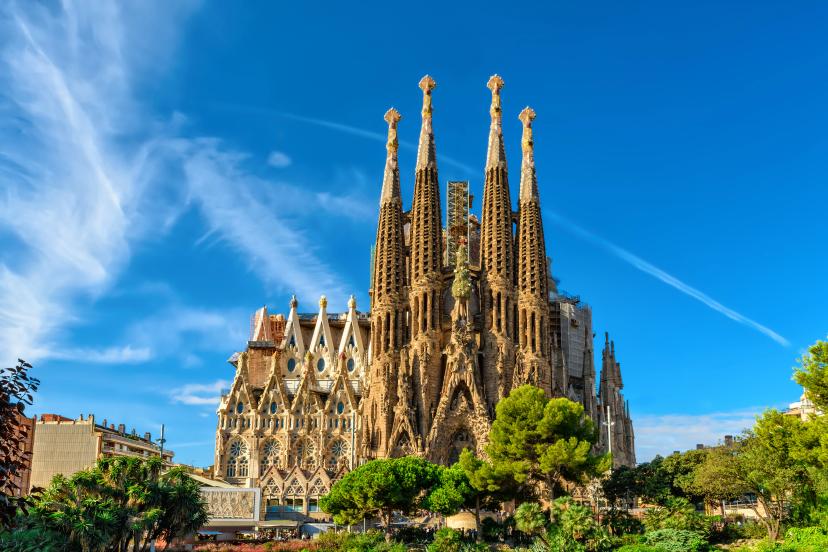
Sagrada Familia
Construction began in 1882 on Antoni Gaudí’s masterpiece, which has become one of the most iconic landmarks in Spain. Its soaring towers, intricate façades, and kaleidoscopic stained glass interiors attract millions of visitors annually. Recognized as a UNESCO World Heritage Site, the basilica blends Gothic and Art Nouveau styles, showcasing Gaudí’s innovative approach to architecture and natural forms.

Laguardia
Perched on a hilltop in La Rioja, Laguardia is a medieval walled town dating back to the 10th century. Its narrow cobbled streets lead to historic churches, ancient city walls, and underground wine cellars carved into the limestone. Visitors can enjoy panoramic views over the Rioja Alavesa vineyards, making it a perfect blend of history, architecture, and viticulture.
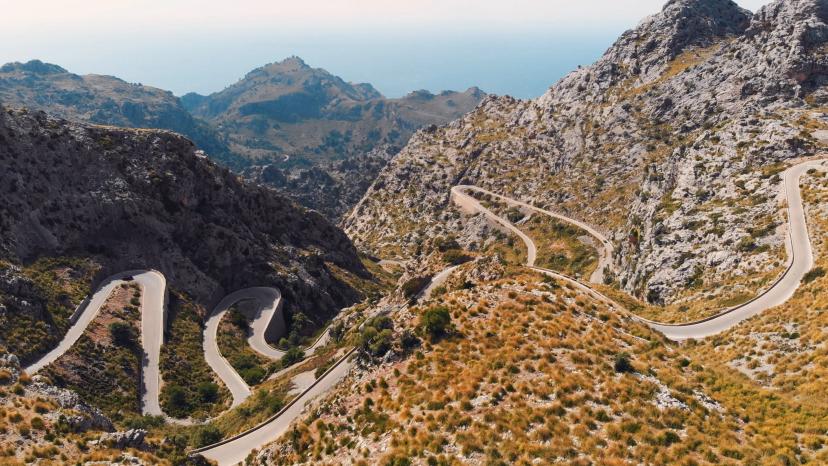
Tramuntana Mountain Range
Stretching over 90 km along Mallorca’s northwest coast, the Serra de Tramuntana is a UNESCO World Heritage Site and one of Europe’s most famous cycling destinations. Its limestone cliffs, winding mountain roads, and terraced hillsides attract pro teams and amateur riders alike. The range features dramatic viewpoints, deep gorges, and historic villages, offering a mix of natural beauty, cultural heritage, and challenging climbs.
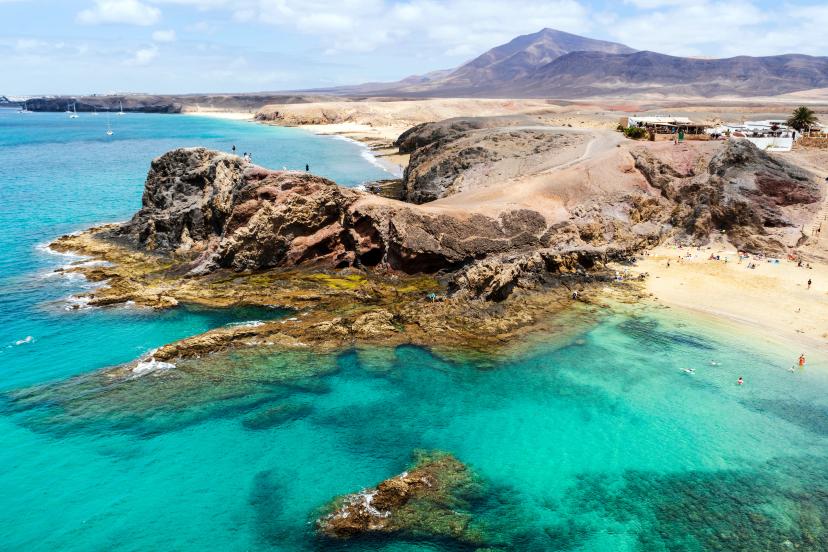
Papagayo
Papagayo is a series of seven pristine coves in southern Lanzarote, each with golden sands and turquoise waters. The area is a protected nature reserve, home to endemic plants, seabirds, and marine life. Snorkeling and swimming are popular here due to the calm, clear waters. Papagayo also offers hiking trails along volcanic cliffs, providing panoramic views of the Atlantic and neighboring Fuerteventura.

Great Mosque of Córdoba
The Great Mosque of Córdoba, a UNESCO World Heritage Site, is one of Spain’s most iconic architectural marvels. Originally built as a mosque in the 8th century, it later became a cathedral, creating a fascinating blend of Islamic and Christian design. Its hypostyle hall features over 850 red-and-white striped arches, while the ornate mihrab and intricately carved columns showcase Moorish artistry at its finest.
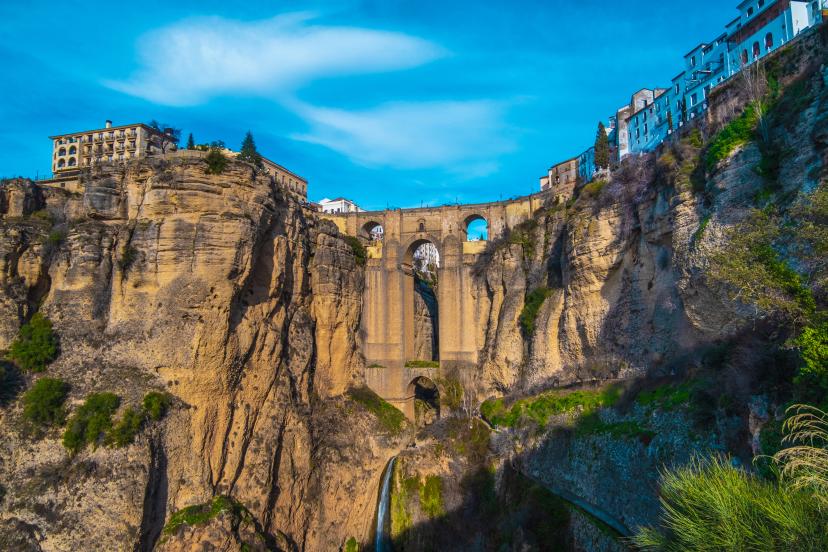
Puente Nuevo – Ronda
Spanning the dramatic El Tajo Gorge, Puente Nuevo stands as Ronda's architectural marvel. Completed in 1793 after 34 years of meticulous construction, this 66-meter-long stone bridge connects the city's old and new quarters. Its central arch, towering 105 meters above the Guadalevín River, offers breathtaking views of the surrounding Andalusian countryside. A chamber above the arch, once used as a prison during the Spanish Civil War, now houses an exhibition.
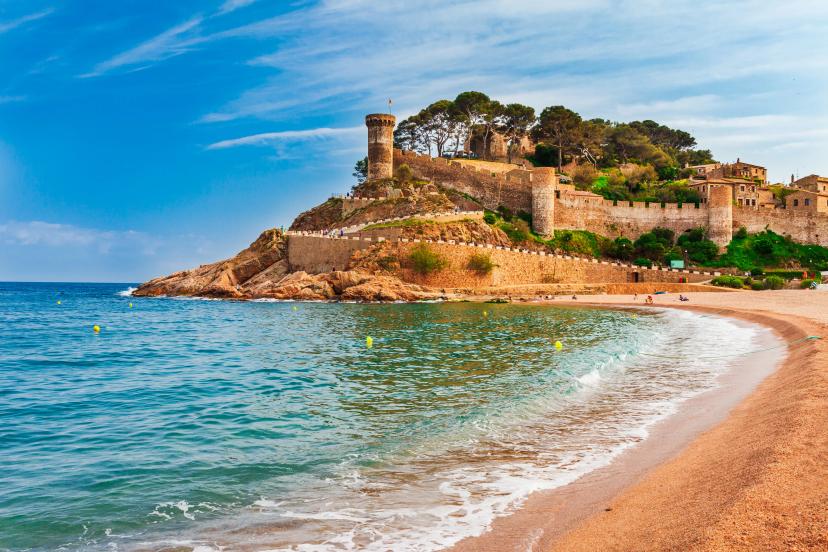
Costa Brava Coastline
The Costa Brava stretches along northeastern Spain with rugged cliffs, hidden coves, and crystal-clear waters that create one of Europe’s most dramatic coastlines. Picturesque fishing villages, pristine beaches, and scenic promontories make it a paradise for nature lovers, photographers, and anyone seeking breathtaking Mediterranean views. From the bustling town of Tossa de Mar to quiet coves near Begur, the Costa Brava offers an unforgettable blend of beauty, culture, and seaside charm.
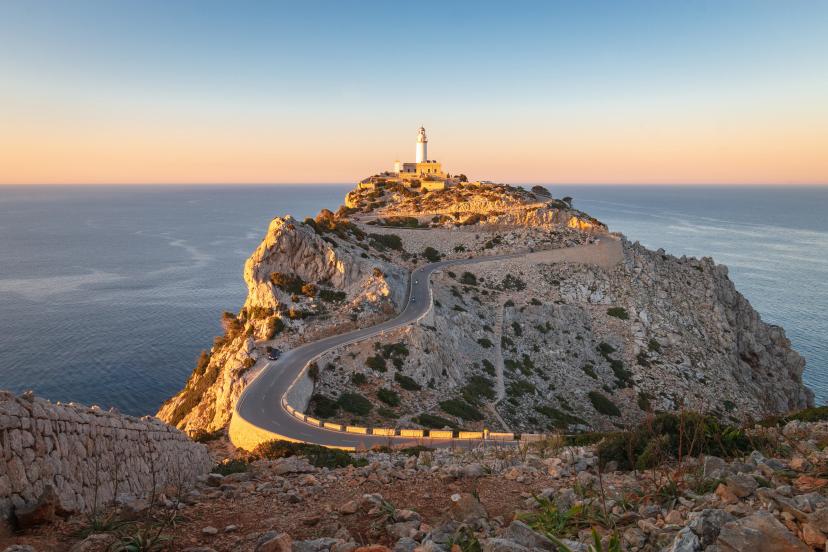
Cap de Formentor
Cap de Formentor is the northernmost point of Mallorca, forming a dramatic headland at the tip of the Formentor Peninsula. This long, slender cape juts into the Mediterranean, its cliffs plunging toward deep blue waters and punctuated by hidden coves and lookout points. At its tip sits the Formentor Lighthouse, built in 1863, perched high above the sea on steep rock. It’s one of Mallorca’s most iconic landmarks, both for its design and its setting.
These landmarks are just a taste of what our cycling holidays Spain offer besides just the ride.
Get inspired and take a deeper dive into every region’s treasures - explore the full list of the must-see places in Spain.
How Many Days for a Cycling Trip in Spain
Spain is larger and more diverse than many riders expect, so choosing the right trip length makes all the difference.
Our Spain cycling trips typically run 5–8 days, giving you enough time to enjoy challenging rides, cultural highlights, and a taste of local life without feeling rushed.
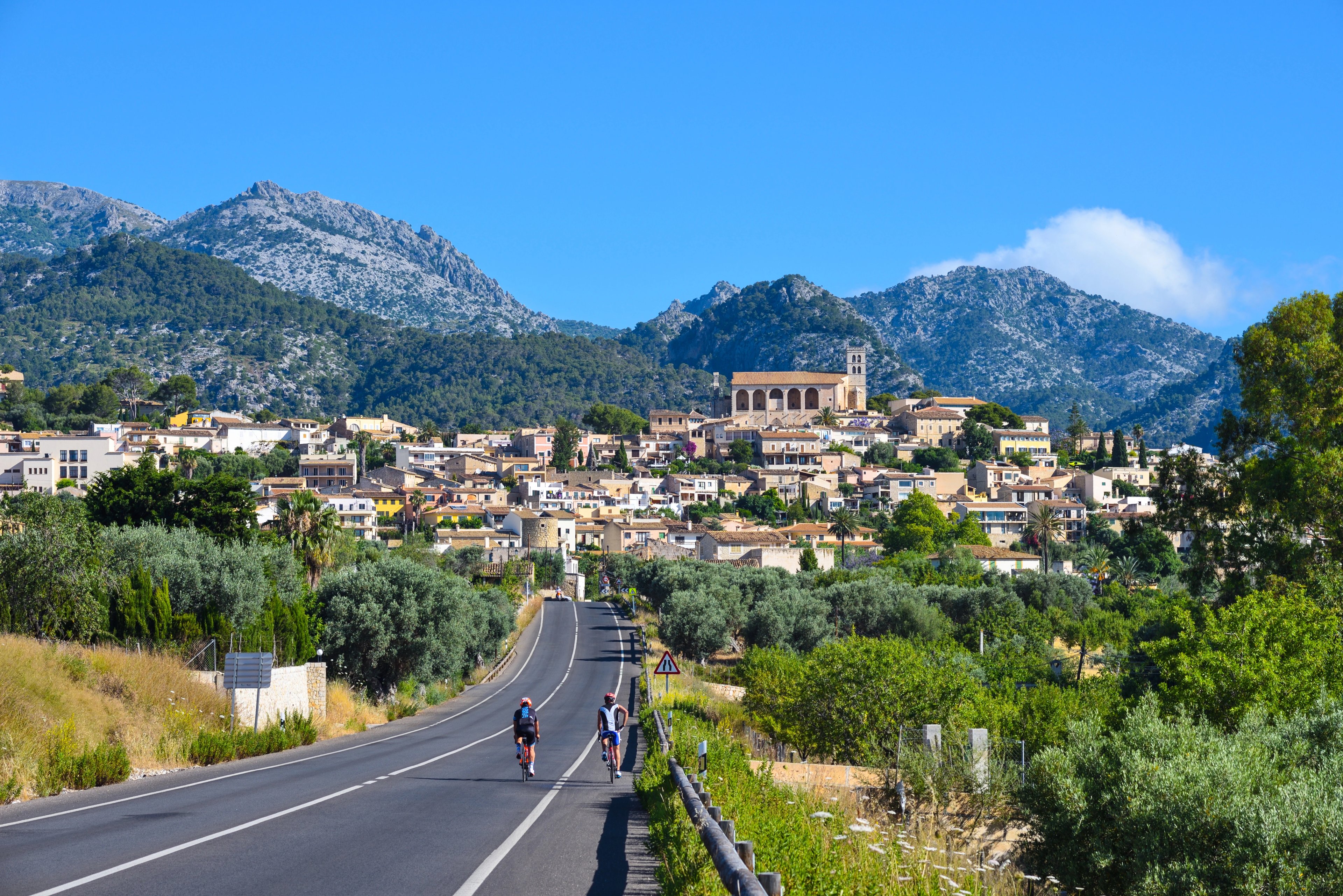
Here’s how you can plan your time on two wheels:
- Quick Getaways (5 days) – Perfect if you want a focused cycling break or to pair a short ride with a wider Spain itinerary. Ideal for regions like Girona & Catalunya or Mallorca, where world-class routes start right outside the city or resort.
- Classic Week-Long Tours (6-7 days) – Our most popular format. A full week lets you combine famous climbs—think Ronda Cycling Holidays—with leisurely exploration of historic towns and unforgettable food and wine stops.
- Extended Adventures (8 days or more) – Best for riders who want to cover multiple landscapes, such as linking longer distances, like Barcelona to Girona, or tacking the Canary Island trails for year-round sunshine.

Because Spain’s regions are well connected by trains and short flights, you can also add extra days before or after your ride to explore cities like Barcelona, Seville, or Bilbao—or simply relax on a Mediterranean beach.
Need ideas on how to fit it all in? That’s where our expertise comes in. Let’s chat and make your bike trip in Spain a breeze.
What to Expect Each Day on a Self-Guided Cycling Tour in Spain
A self-guided tour lets you ride Spain’s best routes with complete freedom—while we handle all the logistics. Here’s how a typical day unfolds.
Morning: Get Set for the Ride
On the first day, your bike is delivered directly to your hotel, fully set up to your booking—hybrid, road, gravel, or e-bike—plus a helmet and all accessories.
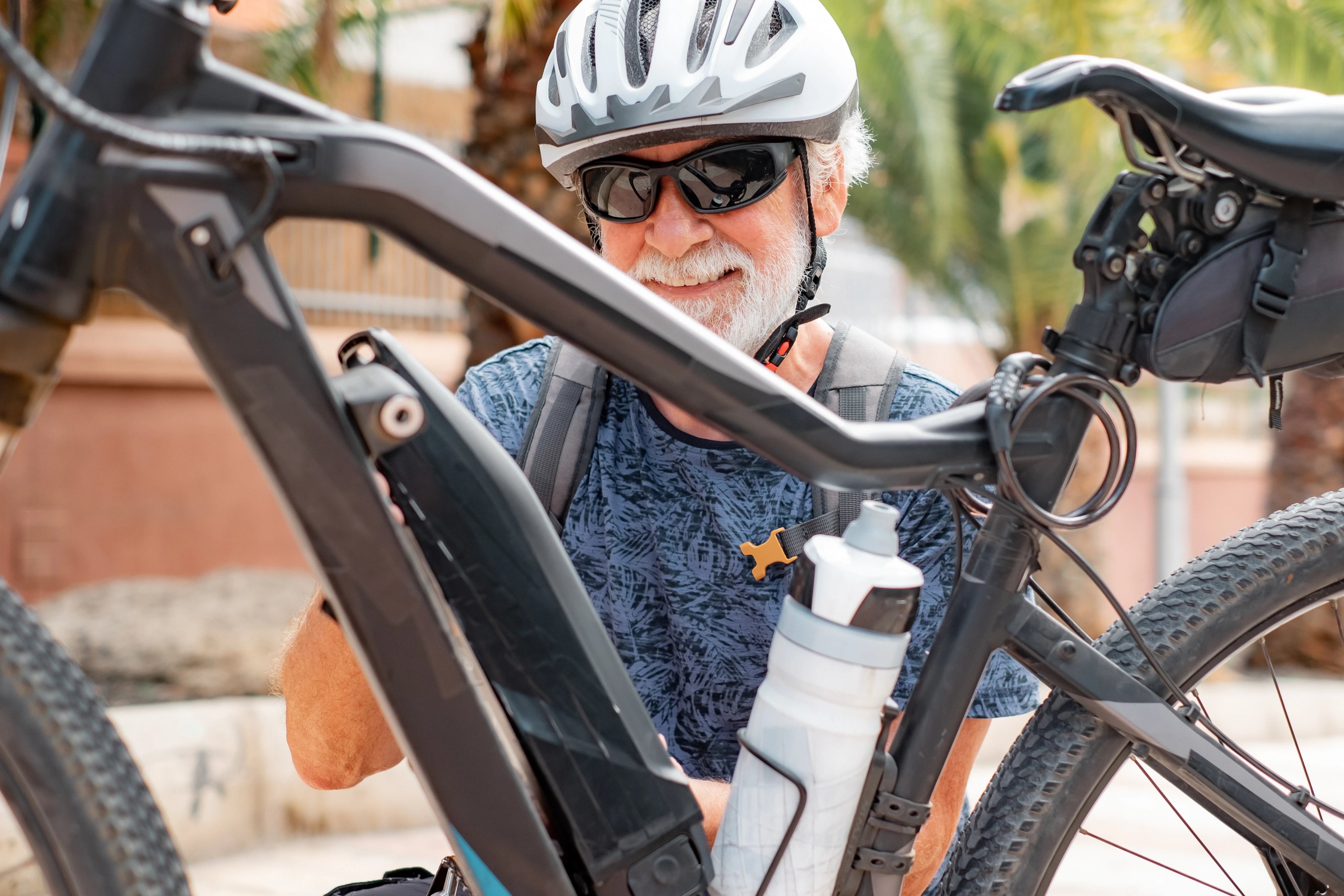
Breakfast is included daily and usually served between 7:00–10:00 AM. In warmer regions like Andalucía or the Canary Islands, we recommend an early start to enjoy cooler temperatures and quiet roads—though Spanish mornings tend to begin later than in many countries, so you won’t feel rushed.
With your personalized GPX tracks and digital guidebook loaded, you’re ready to roll.
Midday: Explore at Your Own Pace
The beauty of our self-guided bike tours is that, unlike the standard group tours, you decide when and where to stop.

You will be equipped with our comprehensive digital guidebook that also includes:
- Scenic lookouts and UNESCO sites
- Historic villages, castles, and chapels
- Recommended cafés and restaurants for a leisurely tapas lunch
Keep the Spanish siesta in mind: many small shops and cafés close from about 2:00–5:00 PM, making it the perfect time for a long lunch or a shady break.
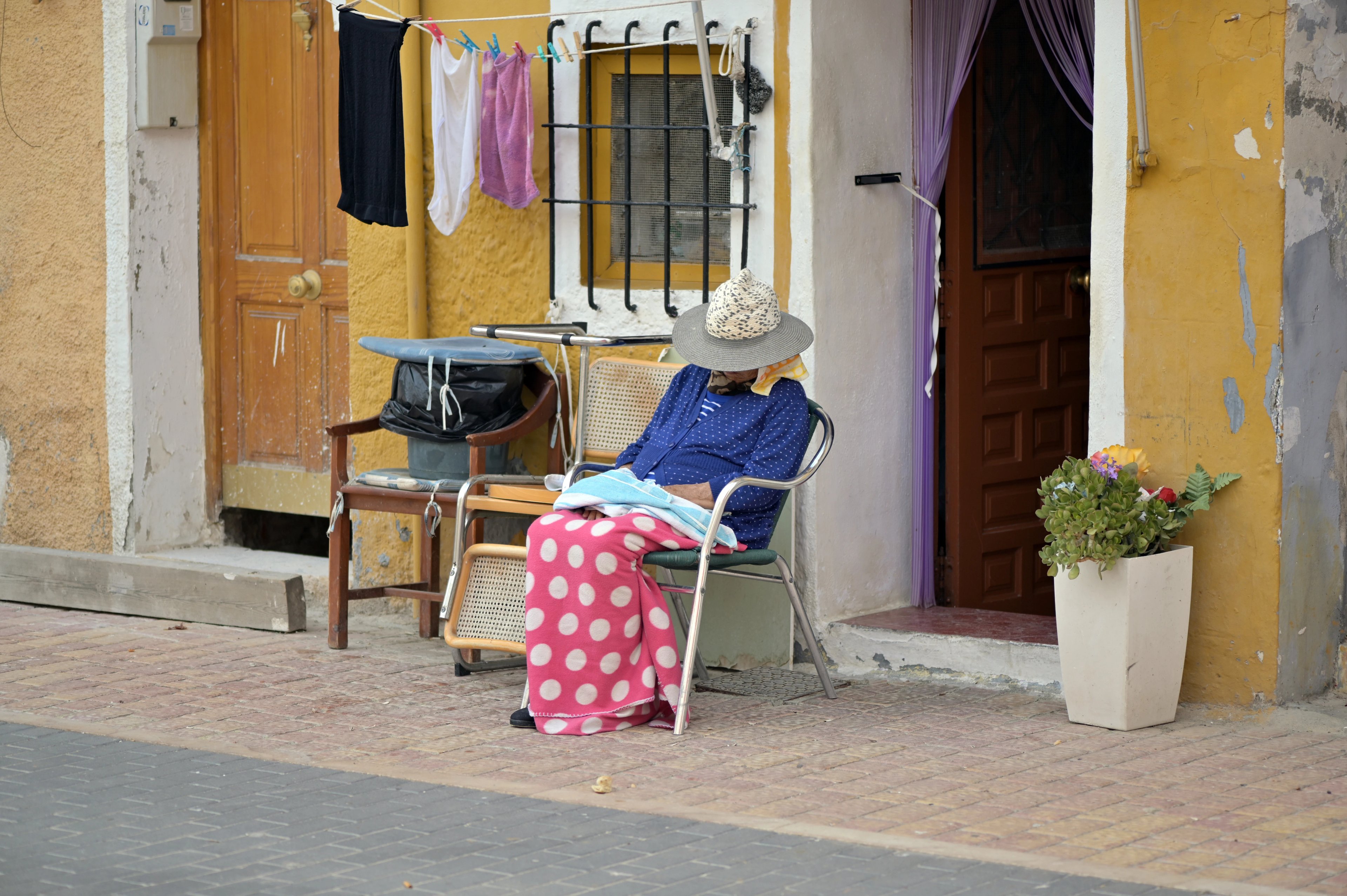
Late Afternoon & Evening: Arrive, Relax, and Enjoy the Night
Most riders reach the next hotel by late afternoon. Your luggage is already waiting, so you can shower, sip a glass of Rioja, or wander the old town.

Remember, Spain comes alive after dark. Locals dine late—restaurants often don’t fill up until 9:00 PM or later—and lively plazas, tapas bars, and even flamenco shows can stretch well past midnight. Your evenings can be as active as your ride.
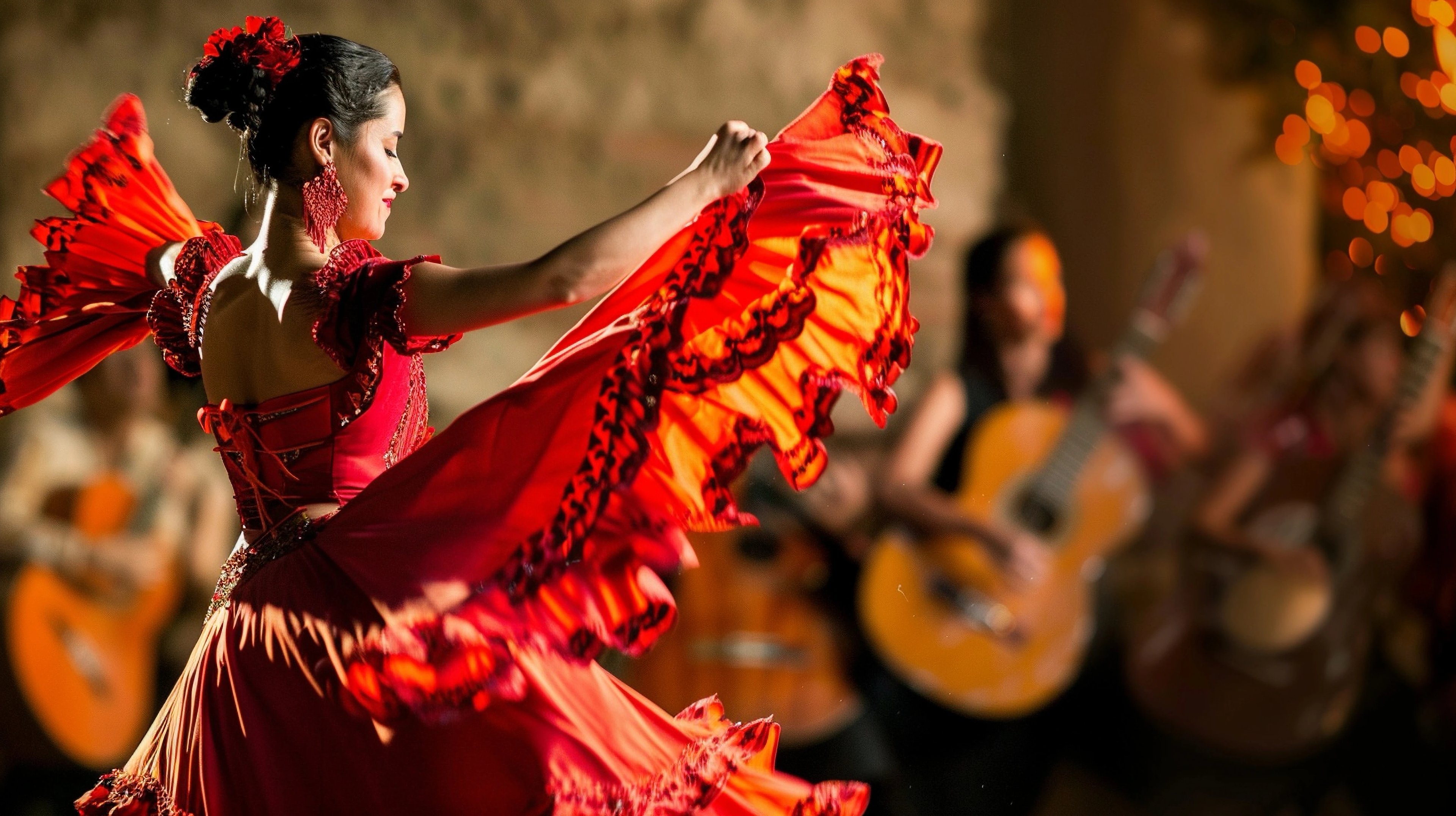
Luggage Transfers Made Simple
- Each morning, leave your bags at reception by 9:00 AM.
- Our partners collect them and deliver them to your next hotel, so you ride light and stress-free.

Cycling Events and Competitions
Even if you’ve never followed a bike race, Spain’s race-day energy is unforgettable.
Streets close to traffic, balconies fill with flags, cafés buzz with fans, and the sound of cowbells carries through mountain passes and seaside boulevards.
Some events are strictly for the pro peloton, while others invite amateurs to ride the very same roads—so you can watch, cheer, or join in yourself.

Here are the top cycling events:
- La Vuelta a España – Spain’s Grand Tour and one of the world’s “big three” races alongside the Tour de France and Giro d’Italia. Held from late August to mid-September, it crosses the country with summit finishes in the Pyrenees, coastal sprints, and a finale in Madrid.
- Volta a Catalunya – A century-old spring classic each March, weaving through Catalonia’s mountains and finishing in Barcelona. Perfect if you’re cycling the Girona or Pyrenees region and want to soak up a true WorldTour atmosphere.
- Clásica de San Sebastián – A one-day summer race in late July or early August through the Basque Country’s steep green hills and along San Sebastián’s stunning bay. Fans crowd the beachfront and cafés spill onto the streets for a festival vibe.
- Gran Fondo Alberto Contador – An open-to-all September event along scenic Mediterranean roads near Valencia. Named after Spain’s legendary champion, it combines well-supported routes with a lively cycling festival.
- The Millars UCI Gran Fondo – A March favourite in Castellón province and a qualifier for the UCI Gran Fondo World Championships. Ambitious amateurs tackle challenging climbs cheered on by locals.
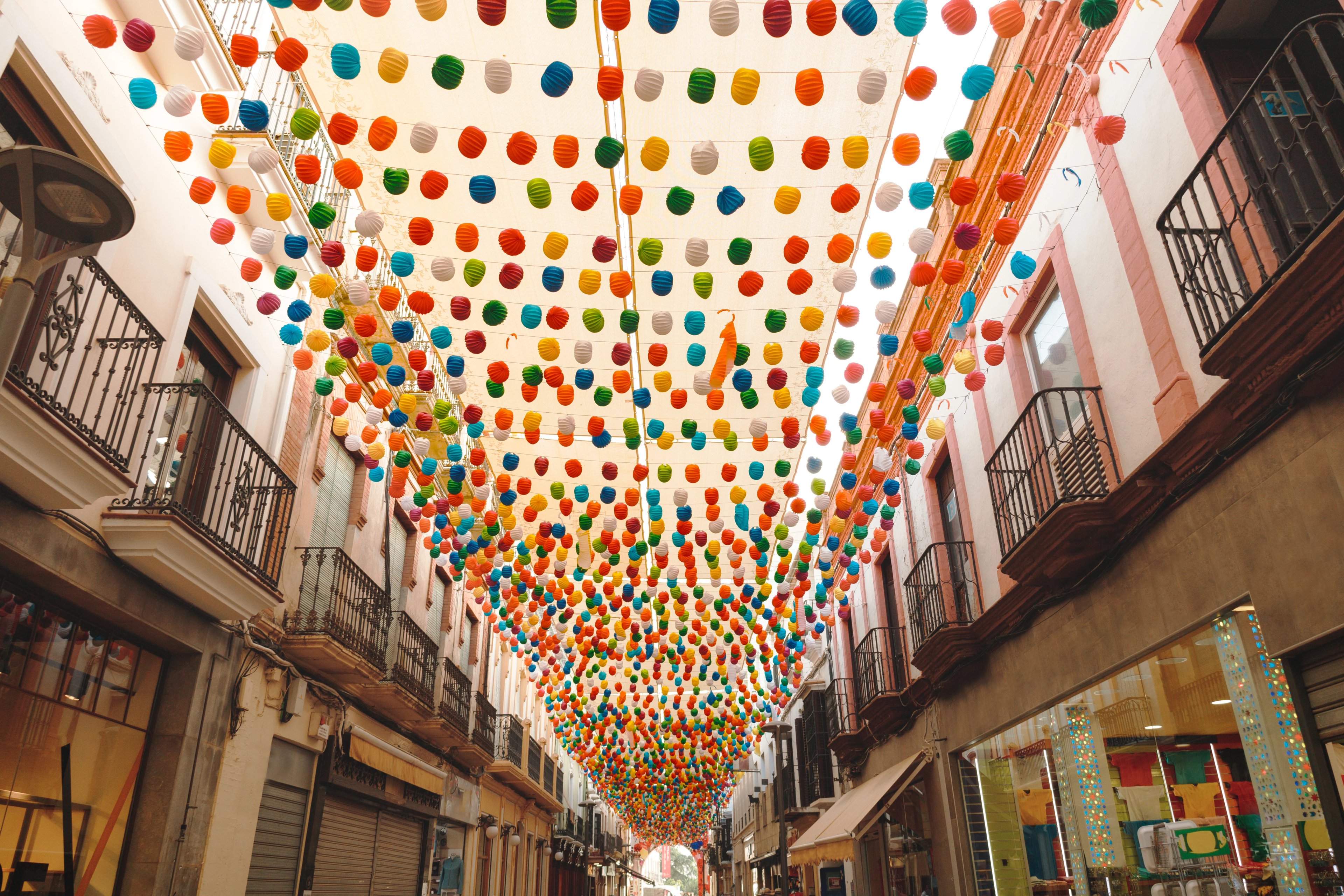
See dates, insider tips, and route details in our full to Spain’s most famous cycling events and start designing your own front-row (or on-the-bike) experience.
What to Pack for a Cycling Holiday in Spain
Packing for a cycling trip in Spain is simple when you know the essentials.
If you book with us, you’ll also receive a digital guidebook with a personalized checklist tailored to your route, the season, and each region’s climate.
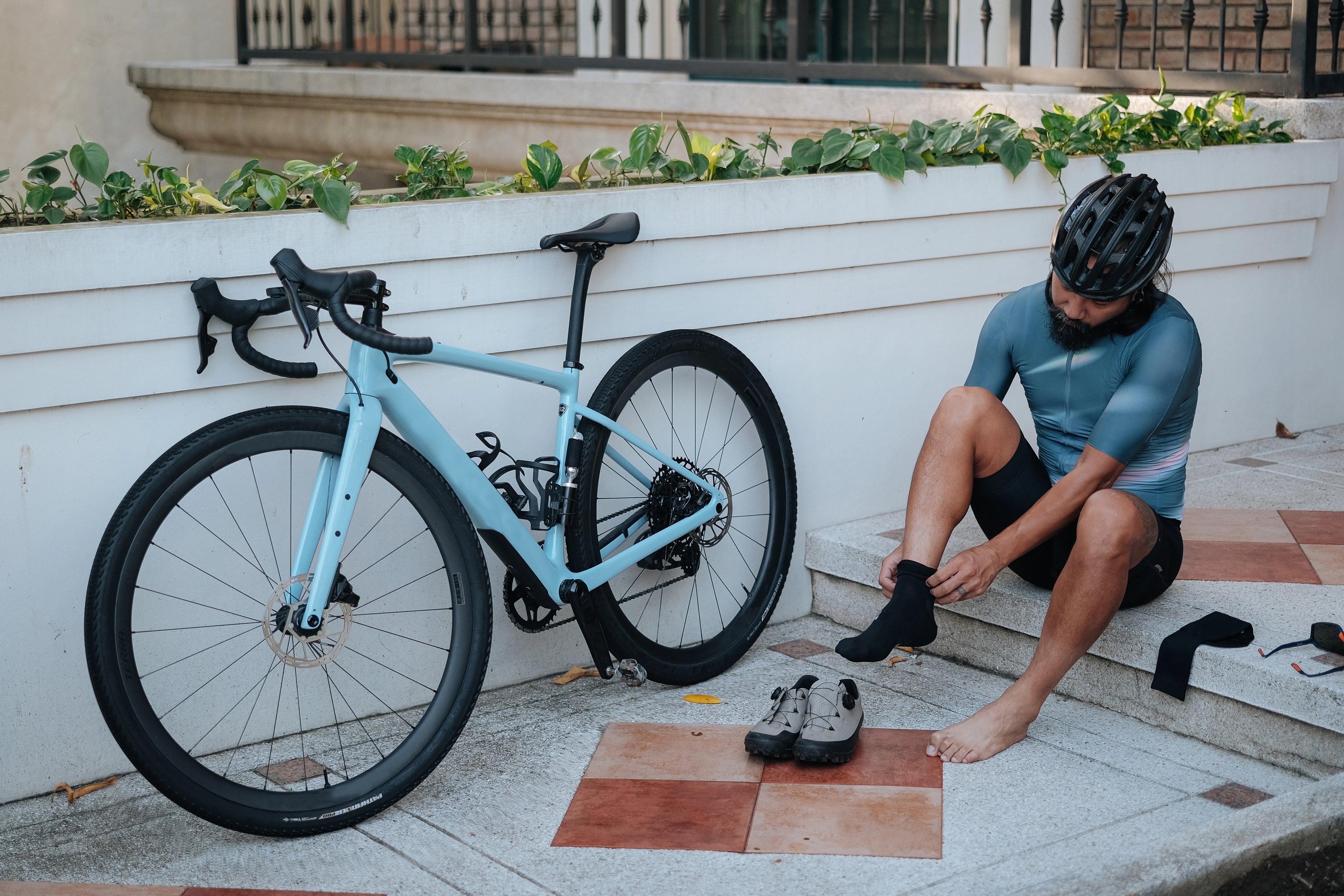
Essentials to Bring
- Passport – Valid for at least 3 months beyond your return date.
- Cycling gear – Jerseys, padded shorts, gloves, and a lightweight rain or wind jacket. Arm/leg warmers are useful for mountain rides where temperatures can drop quickly.
- Casual off-bike clothes – Comfortable outfits for exploring historic towns, enjoying tapas evenings, or relaxing on the coast.
- Swimwear – Ideal for Mediterranean beaches, hotel pools, or a refreshing post-ride dip in the Canary Islands.
- Walking shoes or sandals – Perfect for sightseeing in cities like Seville or Girona and strolling cobbled old towns.
- Helmet – Included with our bike rentals, but you can bring your own if preferred.
- Phone & charger + EU plug adapter (Type C or F) – Spain uses the standard European plug.
- Power bank – Helpful on long rides or when using GPS navigation all day.
- Sunglasses & sunscreen – The Spanish sun can be intense year-round, especially in the south and on the islands.
- Reusable water bottle – Tap water is safe to drink throughout the country.
- Credit/debit cards & some euros in cash – Smaller cafés or rural shops may not accept cards.
- Local SIM or eSIM – Easy to buy at airports, kiosks, and major supermarkets for reliable data on the road.
With these basics, you’ll be ready for everything from Mallorca’s coastal climbs to Andalucía’s sunny backroads—and have what you need for comfortable evenings off the bike.
Cycling Rules in Spain
Bike = vehicle
In Spanish law, bicycles are considered vehicles. You must follow traffic laws just like cars do (stop at red lights, follow signage, yield rules, etc.).
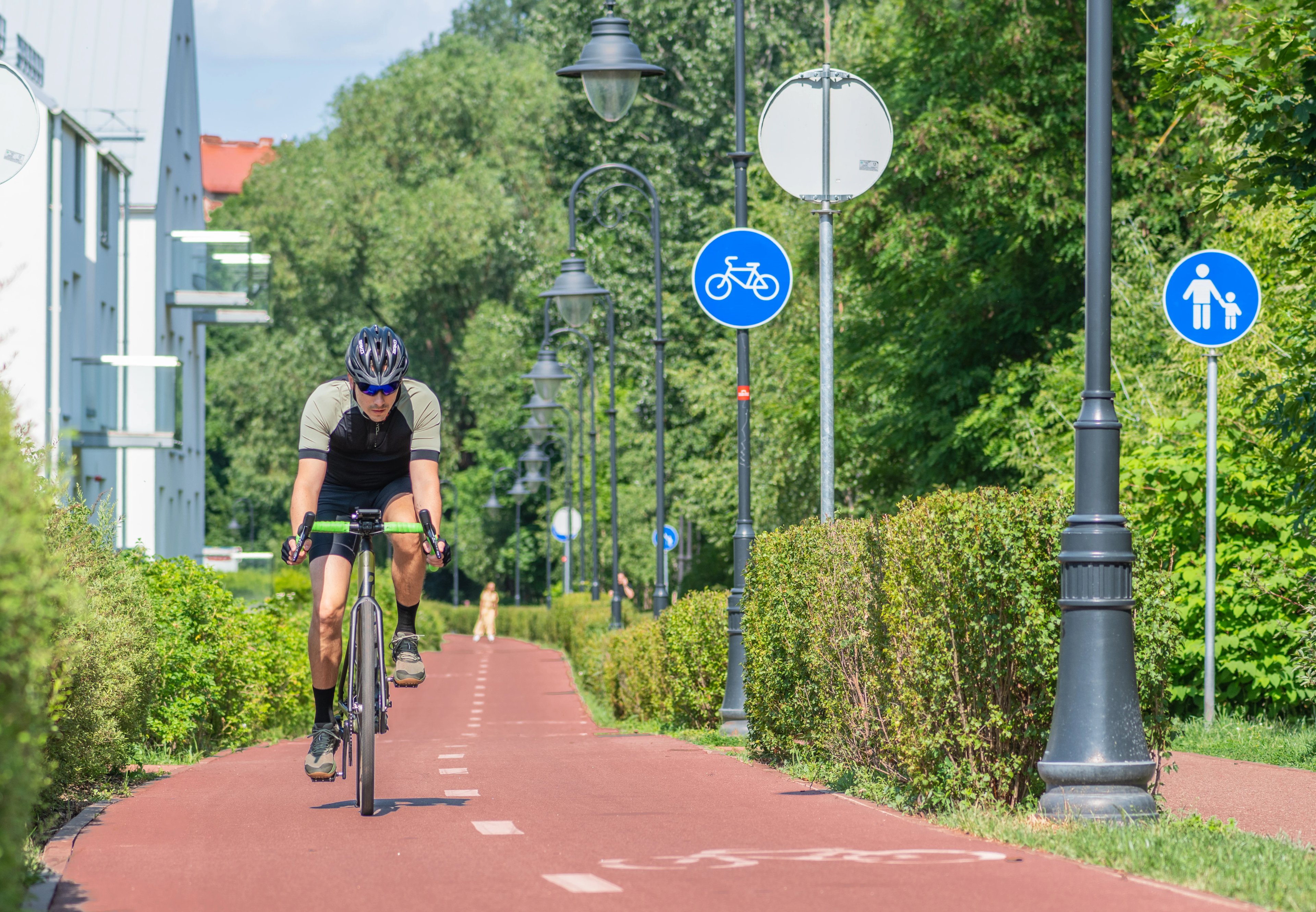
Helmet laws
- On interurban roads (i.e. outside built-up/urban zones), helmets are mandatory for all cyclists.
- Within cities, adults are not always legally required to wear a helmet—but it’s strongly recommended everywhere.
- For under-16s, helmets are required in virtually all settings.
Lights & reflective gear
- You must use a white front light and a red rear light when riding at night, in tunnels, or in low-light conditions.
- In many cases, reflective clothing (visible from 150 m) is required outside urban areas when lights are on.
No mobile phones or headphones
- Using a phone or wearing headphones (or earbuds) while riding is illegal and subject to fines.
Ride on the right & formation rules
- Cyclists should ride as far to the right as safely possible.
- You may ride two abreast, but only when it’s safe and without obstructing traffic. On narrow roads or in poor visibility, you must switch to single file.

Bike lanes, sidewalks & pedestrian crossings
- Where bike lanes exist, it’s strongly advised (though not always strictly mandatory) to use them.
- Do not ride on sidewalks/pavements, unless those areas are explicitly marked for shared pedestrian-bicycle use.
- At pedestrian crossings, you are generally not allowed to ride across: you must dismount and walk your bike.
Signalling & manoeuvres
- Use clear hand signals when turning, changing lanes, or stopping. Failure to signal may result in fines.
Fines & enforcement
Common offences and fines include:
- No lights at night: ~€200
- Using phone or headphones: ~€200
- Riding under the influence: €500–€1,000
- Skipping red light / stop sign: €150–€500
- Not wearing helmet where required: ~€200
Note: Please be aware that fines and enforcement policies may vary by region and can change over time from the date of this guide’s publication.

Etiquette & Best Practices for Safe Riding
- Communicate hazards — call out “car back,” “slopes,” “rocks,” etc. Let fellow riders know what’s ahead.
- Keep a safe gap — maintain at least two bike lengths (or more downhill) to avoid sudden collisions.
- Brake wisely — use both rear and front brakes together, not just the front one.
- Cross obstacles carefully — railroad tracks, paving, cattle grids: approach straight on or dismount if unsure.
- Be visible — even in daylight, wear bright clothing. In tunnels, always turn your lights on early.
- Be courteous — yield to pedestrians, thank drivers who give space, slow down through towns.
- Groups & roundabouts — when riding in groups, the first rider entering a roundabout gives group priority.

Special Notes: E-Bikes & Regional Variations
- E-bike classification: Standard pedal-assist e-bikes (≤ 25 km/h) are treated like regular bicycles. Faster “speed-pedelecs” may face additional regulations depending on the region.
- ebikedelight.com
- Local rules vary: Some towns or islands may enforce stricter rules (e.g. prohibition in pedestrian zones, stricter helmet mandates). Always check municipal signage.
By following Spain’s cycling rules and local etiquette, you’ll ride safer, avoid fines, and blend in as a respected guest on the road. Have questions? We’re here to talk!
Navigating Spanish Culture for Cyclists
Cycling through Spain isn’t just about the rides—it’s about understanding the country’s distinct rhythm and traditions so you can fully enjoy the journey.
Spanish culture is warm and welcoming, but it has its own pace and quirks that may surprise visitors.

Here’s what to know before you roll in:
Daily Rhythm & Siesta
Spain moves to a schedule that’s different from much of Europe:
- Late mornings & late nights – Breakfast is light and often late; dinner rarely starts before 8:30 pm, and restaurants may be quiet until 9:30 pm or later.
- Siesta hours – Many small-town shops and services close from about 2 pm to 5 pm. Plan your mid-day refuel stops or climbs accordingly.
- Grocery stores, cafés in tourist areas, and big-city services stay open, but rural villages can feel like they’ve pressed pause.

Café & Tapas Culture
- Coffee stops are a ritual – Order a café solo (espresso) or cortado (espresso with a splash of milk). Don’t expect giant lattes.
- Tapas & pintxos – Instead of one big meal, locals graze on small plates. Perfect for cyclists who want light bites throughout the evening. Wondering what’s the best thing to eat while in Spain? Here are the must-try dishes and other tips on how to navigate the Spanish culinary scene.
- Splitting the bill is common; tipping is usually modest, but the ordinary 5-10% will be appreciated.

Music, Dance & Local Traditions
- Flamenco in Andalucía – Passionate song and dance performances often start late at night; worth staying up for after a day’s ride.
- Festivals & fiestas – From Pamplona’s Running of the Bulls (San Fermín) to Valencia’s Las Fallas, expect fireworks, parades, and entire towns celebrating in the streets.
- Local holidays can mean sudden road closures or crowded plazas—fun to witness, but plan your cycling route around them.
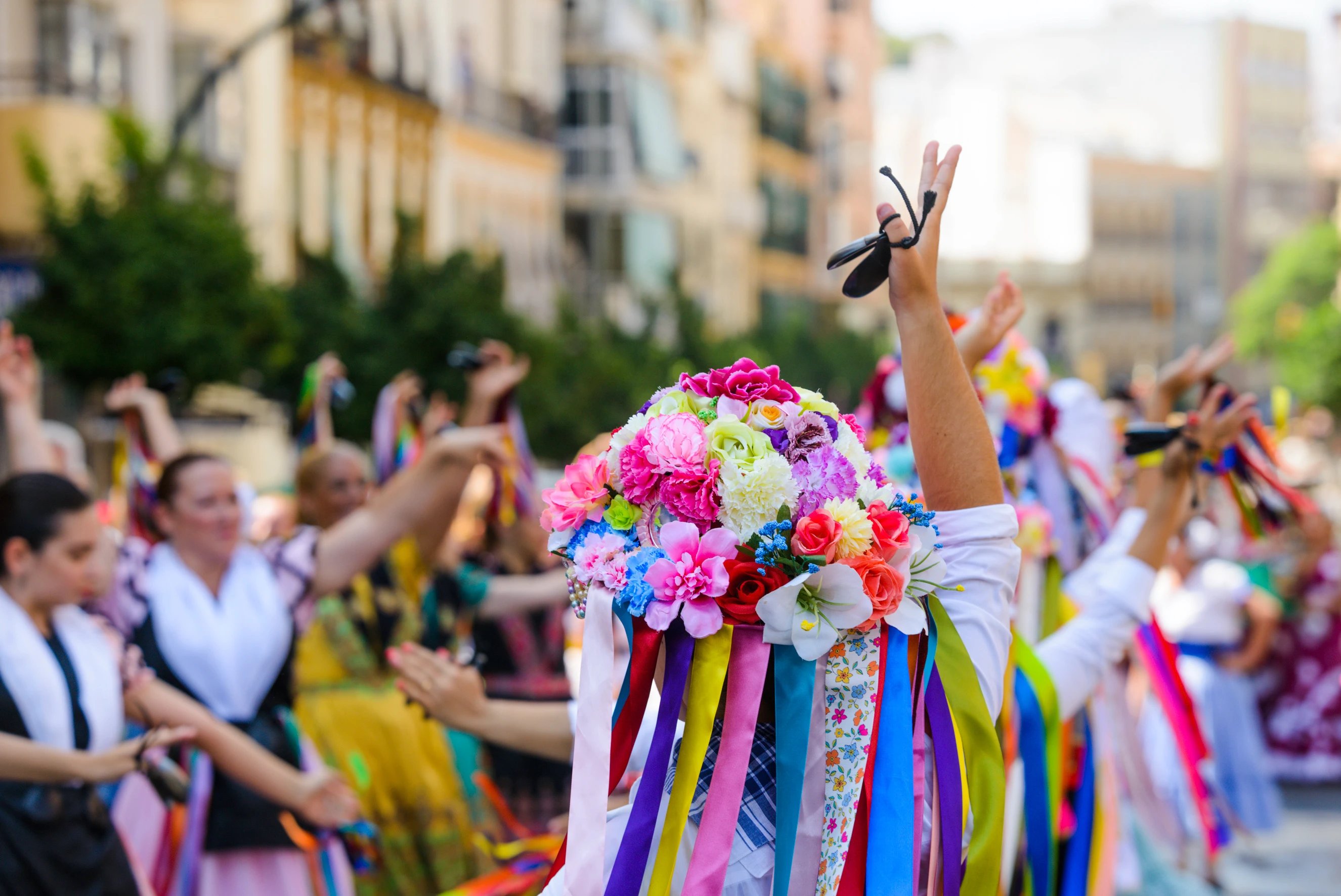
History Everywhere
- Ancient Roman aqueducts, Moorish palaces, and medieval castles appear even on quiet rural routes.
- Many villages have centuries-old churches or town squares where cyclists are welcome to rest and refill bottles—respect the calm atmosphere, especially on Sundays when families gather.

When you book one of our cycling tours in Spain, you’ll receive a digital guidebook that makes sure you don’t miss a thing.
Alongside your GPS routes, it highlights must-see sights, cultural events, and festivals happening during your trip, so you can time your rides to catch a flamenco show, a village fiesta, or a historic parade for a truly well-rounded holiday
Travel Documents & Logistics
Visa & Entry Requirements
Most travelers visiting Spain for tourism can enter the country without a visa for up to 90 days. This includes citizens of the United States, Canada, the United Kingdom, Australia, Japan, and most European and Latin American countries.
Spain is part of the Schengen Area, so the 90-day limit applies to all Schengen countries combined, not just Spain.
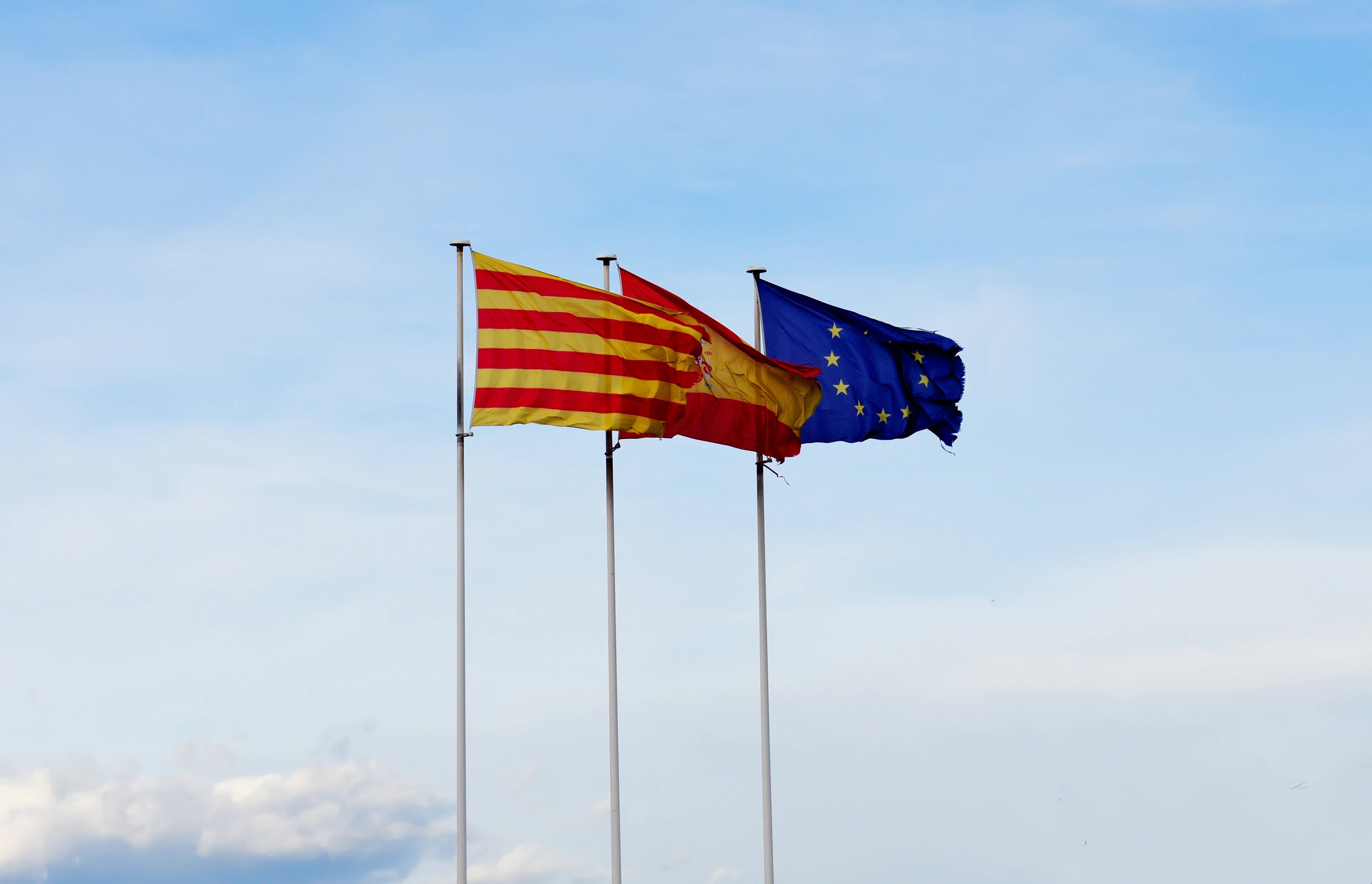
Make sure your passport is valid for at least three months beyond your planned departure date and has at least two blank pages for entry and exit stamps.
Starting late 2026, visitors from visa-exempt countries will also need to apply online for ETIAS travel authorisation, valid for three years or until passport expiry. Learn more about ETIAS here.
Mobile Reception & Connectivity in Spain
Spain offers excellent mobile coverage across cities, towns, and most tourist regions, making it easy to stay connected during your cycling holiday. In rural mountain areas or remote islands, you may occasionally encounter weaker signals, but 4G is widespread and 5G is expanding quickly.

Here’s what you need to know:
- Network Providers: The main operators—Movistar, Vodafone España, Orange, and Yoigo—all provide strong 4G and growing 5G coverage across the mainland and islands.
- SIM Cards: Prepaid SIMs are widely available at airports, convenience stores, kiosks, supermarkets, and mobile shops. Bring your passport for registration.
- eSIM: Most major providers support eSIM for compatible phones, and international eSIM services (such as Airalo or Holafly) also work well for Spain.
- Wi-Fi Access: Hotels, cafés, and many public spaces offer free Wi-Fi, especially in larger towns and popular tourist areas.
How to Get to Spain?
Spain is one of Europe’s easiest countries to reach, whether you’re flying in from overseas or arriving from a neighboring country. Here’s what cyclists need to know when planning their trip.
Major International Airports
Spain has several well-connected airports with frequent flights from Europe, North America, and beyond:
- Madrid–Barajas Adolfo Suárez (MAD) – Spain’s largest hub with direct flights worldwide. Ideal for central Spain, La Rioja, and connections to almost any region.
- Barcelona–El Prat (BCN) – Perfect for Catalonia, Girona, and Pyrenean tours.
- Málaga–Costa del Sol (AGP) – Best for Andalucía, including Seville and Granada.
- Palma de Mallorca (PMI) – Gateway to Mallorca’s famous cycling routes.
- Gran Canaria (LPA) & Tenerife South (TFS) – Main entry points for Canary Islands cycling holidays.

Other regional airports like Bilbao (BIO) for the Basque Country and Valencia (VLC) for the east coast offer excellent European connections.
Train and Land Connections
Spain’s high-speed AVE trains link Madrid, Barcelona, Seville, Valencia, and more, making it easy to add a cycling tour to a wider European trip. You can also reach Spain by train from France and Portugal.
Many regional and long-distance trains allow bikes, but reservations and a bike bag may be required.
You can check the timetables here.
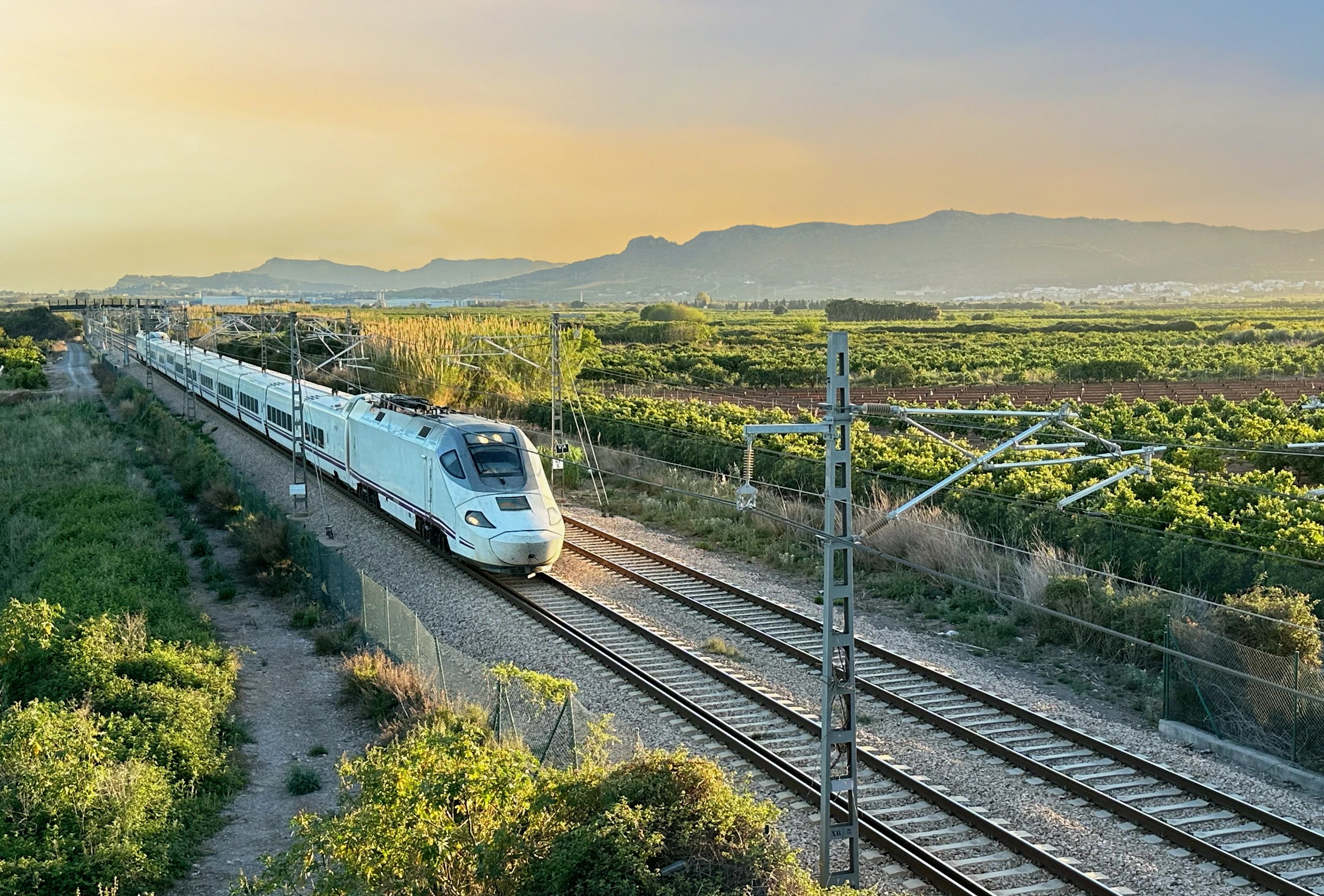
Driving In
If you’re touring Europe by car, Spain is accessible from France, Portugal, and Andorra. Major highways are modern and well-maintained.
Toll motorways (Autopistas de Peaje, “AP” roads): Some major highways are still tolled, although many have recently become toll-free. You’ll see clear blue “AP” signs where tolls apply. Payment is made at booths by cash, credit card, or electronic tag (such as the Spanish Via-T or French Télépéage, which are interchangeable).

Toll prices vary by distance and region—expect anywhere from a few euros to over €30 for a long coastal stretch.
Ferries
Ferries connect Spain with Italy, Morocco, and the Balearic Islands. Routes such as Barcelona–Mallorca or Valencia–Ibiza are ideal if you’re bringing your own bike and want a scenic start.
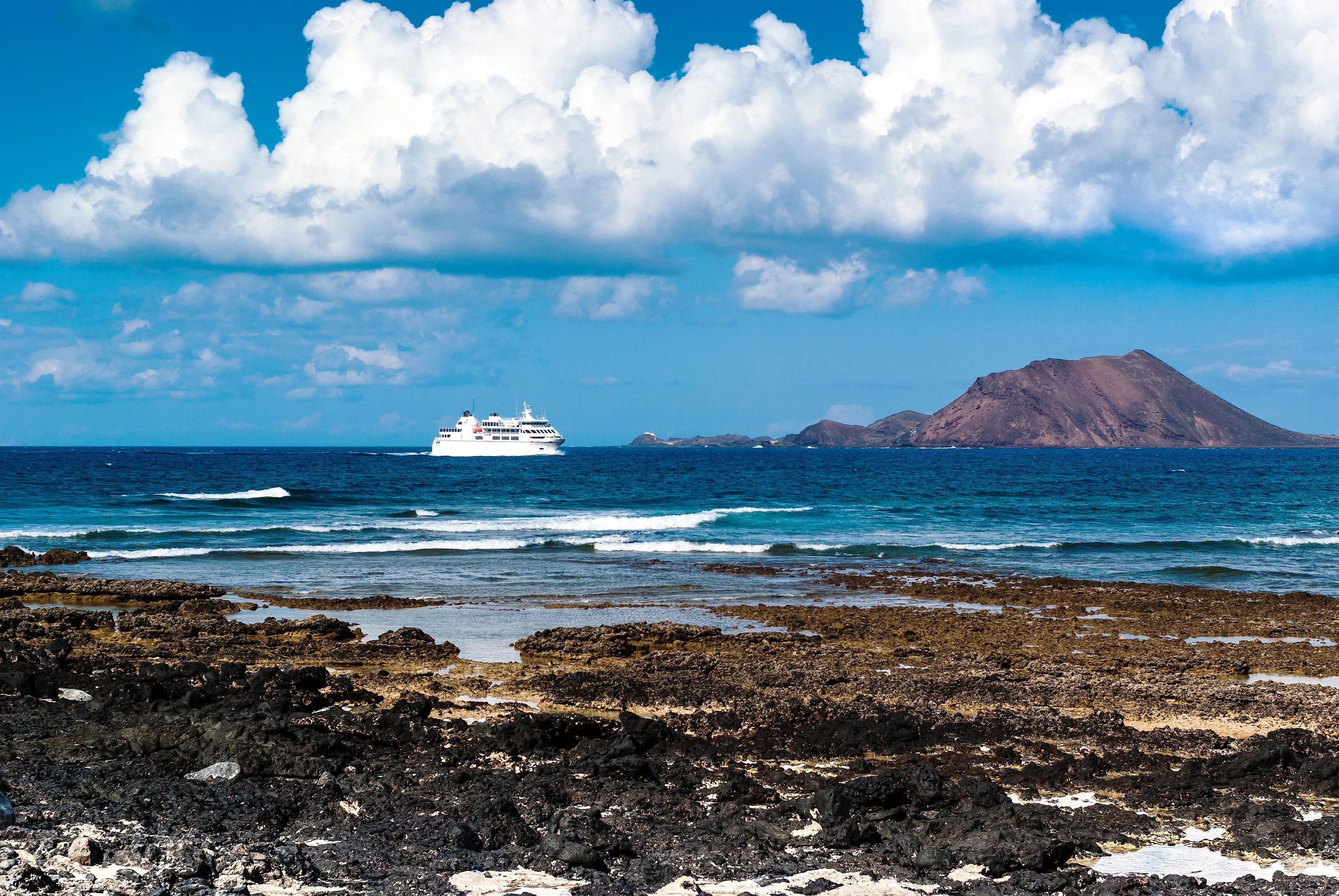
Once you’re in Spain, if you need to travel from your arrival city to the starting point of your cycling tour, our digital guidebook includes step-by-step public transport instructions—covering trains, buses, and any connections—so you can reach your first hotel smoothly without having to research routes or timetables yourself.
Cycling Spain Made Easy
When you book a Spain cycling holiday with us, you’ll receive a detailed digital guidebook packed with everything you need for a smooth, worry-free trip.
Included in every tour:
- Digital guidebook with your full itinerary, route maps, and insider local tips
- Easy-to-use GPS navigation for every stage of your ride
- Complete tour planning and organization, from hotels to route logistics
- Luggage transfers between accommodations so you can ride light
- Before and on-tour support
Still deciding where to explore? Send us an inquiry and we’ll help you choose the perfect Spain cycling tour—tailored to your fitness level, riding style, and appetite for adventure.

Hassle-Free
We handle itineraries, accommodations, and anything else you prefer not to deal with, so you can enjoy a carefree holiday.

Completely Customizable
Flexibility is our middle name — whether you want more or less, or just beyond ordinary, we’ll make it happen.

Book with confidence
We are a financially protected company, fully bonded and insured, keeping your money safe and allowing you to travel with confidence.

Unbeatable support
Our 24/7 customer support is where we show our passion, bringing you a better experience by making your well-being our number one priority.

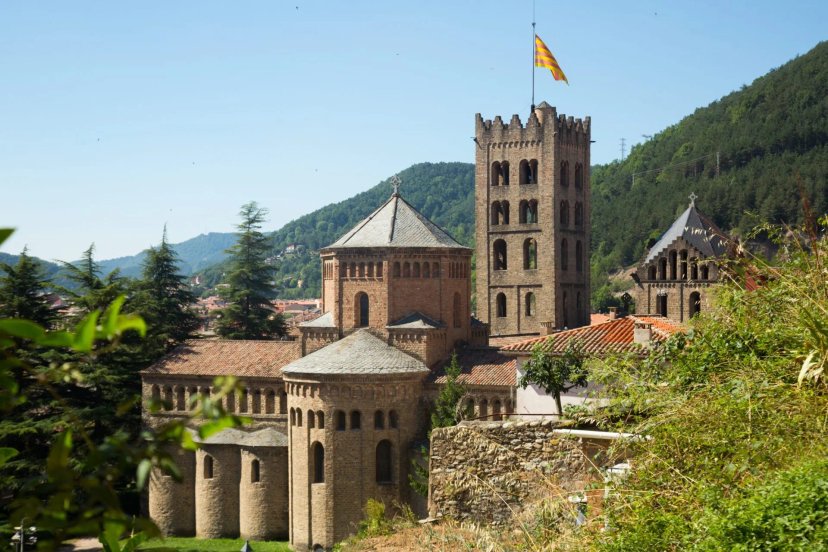

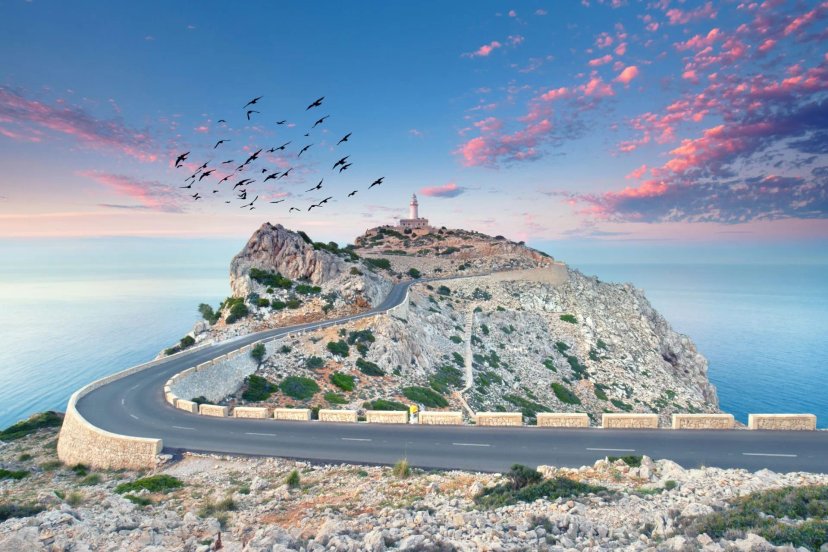
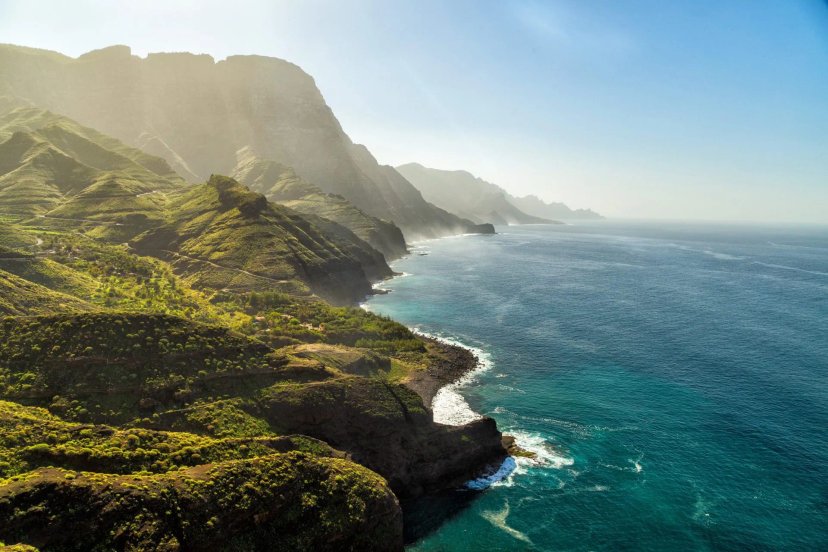
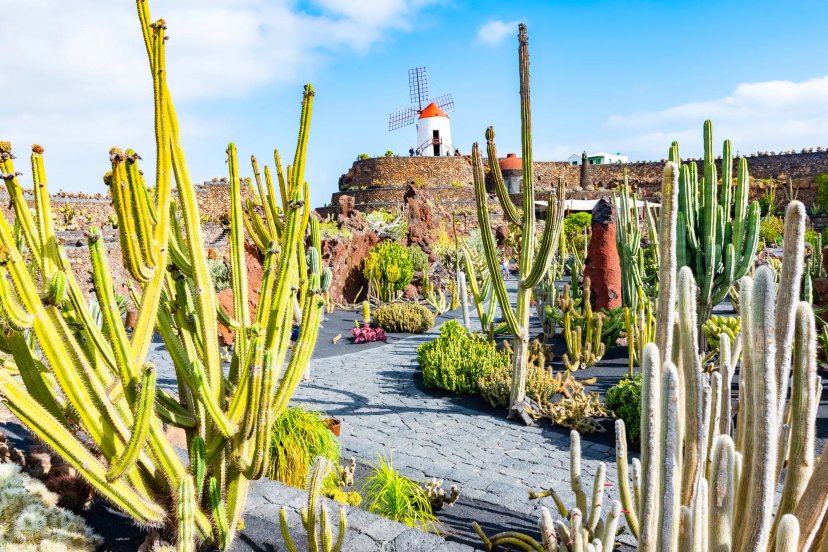
.jpg&w=3840&q=75)
